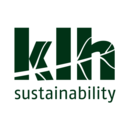Product transparency declaration
The PVC industry has been heavily targeted in the past for the environmental and human health impacts associated with its manufacture, use and disposal. Many industries however benefit from the cost-effectiveness, versatility and light-weight nature of this plastic.
Now, the Resilient Floor Covering Institute, which represents over 95% of resilient flooring manufacturers in North America, including; cork, vinyl, linoleum, and rubber, have launched a new Product Transparency Declaration (PTD). The PTD takes the information provided in Environmental Product Declarations and Health Product Declarations to enable specifiers to understand if the ingredients used in a finished product are in a final form or high enough concentration to be harmful to the health of a building occupant.
This PTD is promoted as easier for manufacturers to navigate and for architects and contractors to understand. In the new PTD the manufacturers are required to list the contents of the finished product as opposed to listing the ingredients used to make the product. This will ensure that the information regarding the catalysts and other by-products of chemical reactions that are dissipated during the manufacturing process are also disclosed and not just the pure raw materials. This will create more transparency about the final product delivered on site.
Another interesting approach the PTD has taken is to simplify the declaration process. According to William Freeman, technical consultant to the Resilient Floor Covering Institute, the current Health Product Declaration is not easy to fill out. This has resulted in a range of consultants charging thousands of dollars to manufacturers to fill out the Health Product Declaration, money that could be more usefully spent on research and reformulation.
The PTD has a more straight forward approach to declaring product contents. The PTD’s are expected to be published voluntarily by product manufacturers but will be verified with the signature of a responsible company official.
It remains to be seen how the industry respond to this new voluntary approach, however, improved simplicity and transparency which enables time and money to be focused on research to exclude the most harmful chemicals rather than paperwork must be applauded.
Although this is not the first time a product manufacturer has created an alternative to the existing environmental standards, it is exciting to see industry driving change from within rather than waiting for legislation.
This article was created by --KLH Sustainability 09:27, 13 December 2013 (UTC) as part of an ongoing series of blogs for Designing Buildings Wiki.
[edit] Find out more
[edit] Related articles on Designing Buildings Wiki
Featured articles and news
Ebenezer Howard: inventor of the garden city. Book review.
The Grenfell Tower fire, eight years on
A time to pause and reflect as Dubai tower block fire reported just before anniversary.
Airtightness Topic Guide BSRIA TG 27/2025
Explaining the basics of airtightness, what it is, why it's important, when it's required and how it's carried out.
Construction contract awards hit lowest point of 2025
Plummeting for second consecutive month, intensifying concerns for housing and infrastructure goals.
Understanding Mental Health in the Built Environment 2025
Examining the state of mental health in construction, shedding light on levels of stress, anxiety and depression.
The benefits of engaging with insulation manufacturers
When considering ground floor constructions.
Lighting Industry endorses Blueprint for Electrification
The Lighting Industry Association fully supports the ECA Blueprint as a timely, urgent call to action.
BSRIA Sentinel Clerk of Works Training Case Study
Strengthening expertise to enhance service delivery with integrated cutting-edge industry knowledge.
Impact report from the Supply Chain Sustainability School
Free sustainability skills, training and support delivered to thousands of UK companies to help cut carbon.
The Building Safety Forum at the Installershow 2025
With speakers confirmed for 24 June as part of Building Safety Week.
The UK’s largest air pollution campaign.
Future Homes Standard, now includes solar, but what else?
Will the new standard, due to in the Autumn, go far enough in terms of performance ?
BSRIA Briefing: Cleaner Air, Better tomorrow
A look back at issues relating to inside and outside air quality, discussed during the BSRIA briefing in 2023.
Restoring Abbotsford's hothouse
Bringing the writer Walter Scott's garden to life.
Reflections on the spending review with CIAT.
Retired firefighter cycles world to raise Grenfell funds
Leaving on 14 June 2025 Stephen will raise money for youth and schools through the Grenfell Foundation.
Key points for construction at a glance with industry reactions.

























